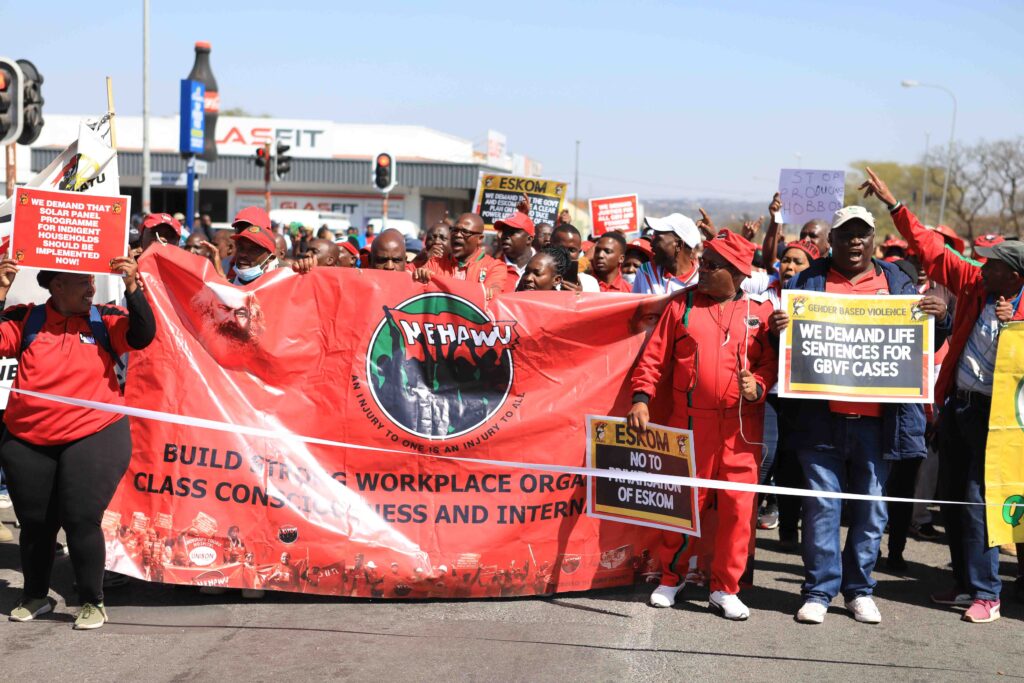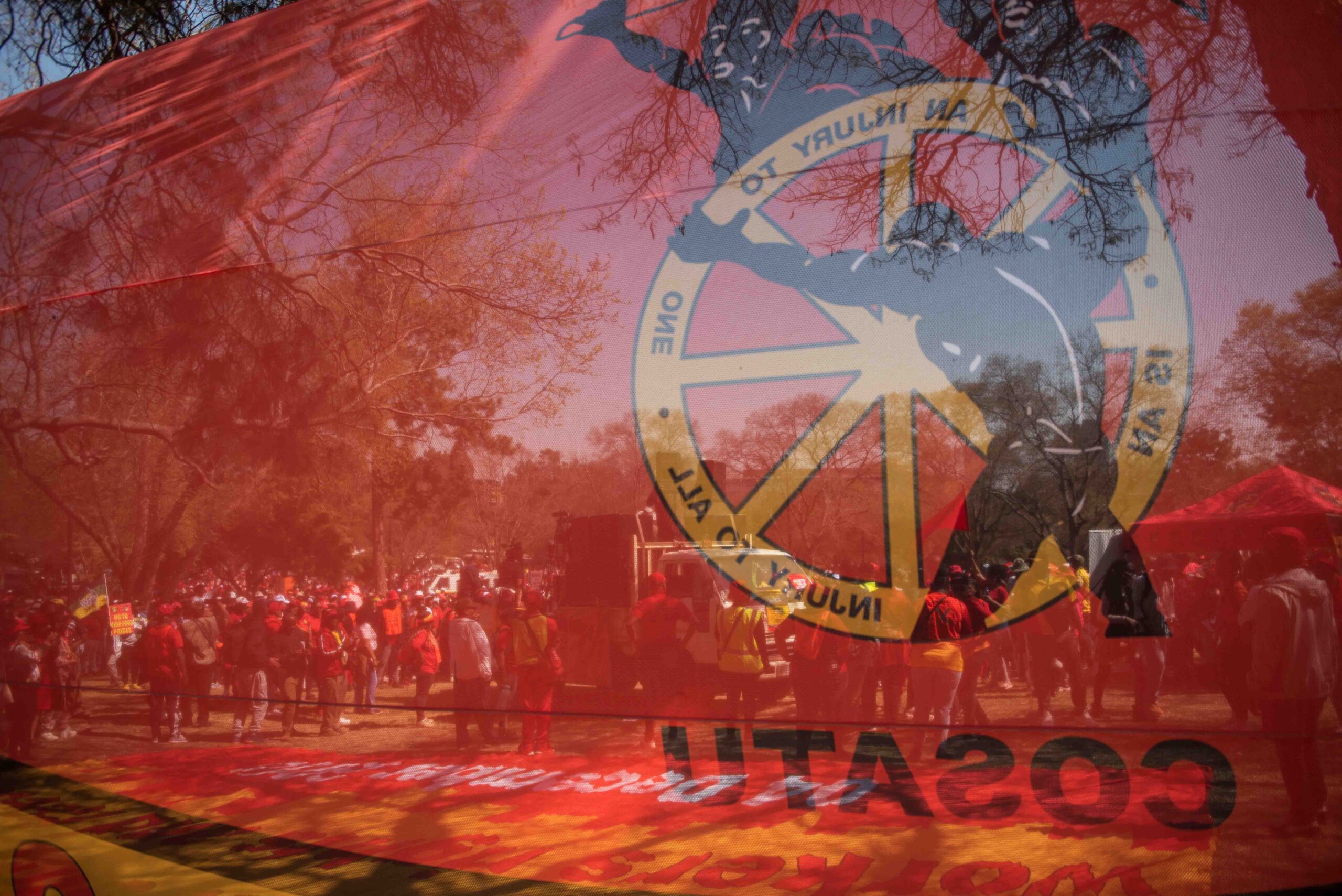Modidima Mannya takes a look back at the history of trade unions in South Africa and delves deeper into their current standing in the country
In the many years of trade unionism, the world over, the refrain “workers of the world unite” must have become a complex concept to implement despite its popularity. This complexity is demonstrated by the fact that as matters stand, there are at least four trade union federations; COSATU, NACTU, FEDUSA, and the new-born SAFTU.
The history of trade unions and political affiliation goes back a long away. Prior to 1994, there were various streams of thought amongst trade unions with some opting to be independent of political affiliation, whilst others were actively associated and active participants in hardcore political activity. With the advent of democracy, this divide remained in place and effectively continues to date. COSATU has since been an active member of what is referred to as the ‘tripartite alliance’, made up of the African National Congress and the South African Communist Party. NACTU, on the other hand, although not overtly active remains associated with the Pan Africanist Congress. FEDUSA continues to pursue a non-political role and represents what are traditionally known as independent trade unions.
SAFTU was formed on the basis of it being political non-aligned until the formation of the Socialist Revolutionary Workers Party by its biggest affiliate, the National Union of Metal Workers of South Africa (NUMSA). SAFTU was formed mainly as a breakaway of COSATU after the expulsion of Zwelinzima Vavi and the departure of NUMSA from COSATU, which saw other COSATU affiliates leave COSATU and other parallel unions formed to compete for the gaps created in the formation of SAFTU.
COSATU unions would by virtue of their alliance with the ruling ANC benefit over the years. The participation of COSATU in the alliance enabled proximity to the political leadership. Many leaders of the various COSATU affiliates were deployed to various state organs including Parliament and the Executive, giving COSATU a significant influence over the state. This was, however, not fully beneficial to industrial unions, who had to confront the private sector within the context that some of their erstwhile leaders and comrades were now part of the so-called capitalist establishment as new owners or part owners of big companies. This as a result of Black Economic Empowerment.
With the Constitution guaranteeing political, socio-economic, and labour rights, the context of a trade union under apartheid and under a democratic dispensation had changed. Section 77 of the Labour Relations Act strengthened the hand of trade unions to fight for social justice in addition to fighting for the rights of workers. Even as the Constitution guaranteed the right to strike and protest, some of the violence seen in the 1980s strikes came back to haunt. In December 2000, a violent security guards strike took place. Another security guards strike in 2006 lasted almost three months and left an estimated 60 guards dead. This was followed by another violent strike involving municipal workers. In 2012, another violent strike in the mining industry, later called the Marikana Massacre, left many dead. Interestingly, the strike followed the formation of a new trade union which was effectively a breakaway from the National Union of Mineworkers.
One would have made two assumptions about the post-apartheid era in terms of unionism. The first assumption would have been that with the most generous labour relations legislation, trade unions would find it much easier to assert workers rights. The second assumption would be that with a changed political environment, the relationships between the government, the private sector, and trade unions would improve significantly. Aligned to these assumptions would be further assumptions that past leaders of the trade union movement would lead the charge from within government to improve the lot of the workers. This appears not to have been and to be.
The political fallout
Whilst COSATU was part of the tripartite alliance, the wheels came off in 1998 when COSATU started its challenge to the government macro-economic policy, GEAR. At the heart of the dispute was what COSATU protested was an absence of a debate on the policy at the ANC conference in Mafikeng where the policy was said to have been adopted. The SACP, which styled itself as the vanguard of the working class, took the side of COSATU. As reported in one newspaper at the time, “so angry is COSATU that its leaders swung into action blaming government and Gear for almost every crisis in the country…”
After many years of bickering, 2007 arrived and the ANC held its elective conference. Thabo Mbeki, who had been President for two terms and sought a third term, lost the race, courtesy of the support from COSATU and the SACP. Zuma, who was elected President and piloted as worker-friendly, was soon to face calls for him to go. In 2017, COSATU effectively barred Zuma from speaking at its events and in one instance booed him.
Trade unions under a democratic dispensation and despite their proximity to political power still face major hurdles to achieve their primary objective of improving the quality of life of their members. They are also still far away from achieving the unity required of the workers. The fact that some of trade unions operate and are active participants in hardcore political discourse aggravates the movement away from the unity of the workers. That said though, they have made significant gains from the advent of democracy and their political proximity to power.
The challenges of collective bargaining
Collective bargaining both within the public and private sectors has not been that easy for trade unions. Two issues account for the challenges. The first is lack of unity and the fragmented trade union approach to collective bargaining. This is compounded by the desire to utilise collective bargaining to address the socio-economic challenges facing workers and the working class. It is this which has led to demands for higher wage increases often leading to disputes resulting in strikes. The second is the fact that both the public sector and the private sector sought to contain their wage bills. The Marikana strike and the recent dispute between the government and public sector trade unions on the disputed three year wage agreement exemplifies this.
A further complexity to collective bargaining has been what appears a weakened trade union movement unable to unionise the millions ununionised workers. Despite the fact that the majority of workers remain ununionised, trade unions have been unable to attract these workers and increase their membership and consequently bargaining power. The most glaring failure of the trade union movement was to fail to organise the almost one million domestic workers and farm workers who are the most vulnerable and the lowest level of the social ladder.
One of the major successes stories of the trade union movement post 1994 is the effectiveness of NEDLAC where trade unions are a party. In many respects, NEDLAC has played a role as “a crucial vehicle for forging partnerships between South Africa’s main social partners in order to jointly rebuild a post-apartheid South Africa”. The COVID-19 pandemic is the clearest example of the critical role played by NEDLAC to minimise the disruption caused by the pandemic. It was through NEDLAC that the various social partners found a common ground to address the effects of COVID-19.
Essential services and the right to strike
The Labour Relations Act provides for the designation of certain services as essential services. These are the services which have a bearing on the life, health, and property. Trade unions have to operate within the context of limitations imposed by the designation of essential services.
This means that not every trade union and its members are entitled to strike, particularly in the absence of a minimum service agreement. The recent NEHAWU strike has presented a moral dialemma. The strike saw members of the public being prevented from accessing medical facilities and some of the health workers participating in the strike. In certain reported instances, health workers were either prevented from working or removed from health facilities.
The teacher union SADTU and other teacher unions successfully opposed the designation of education as an essential service. This would have prevented teachers in particular from embarking on a strike. There, however, appears to be change in the approach of teacher unions. When other public sector unions opted to embark on strike action, they elected not to. This raises questions about the continued unity and hegemony of trade unions but more importantly reflects a maturity within the labour movement to fully exhaust other options before a strike.

Casualisation
Casualisation remains one of the biggest challenges facing trade unions in South Africa. Even with the success of doing away with labour brokers and the successful agitation for changes to labour legislation, casualisation remains a pervasive problem. This is exacerbated by two issues. First, the sluggish economic growth which has over the years led to massive job losses and the consequent high unemployment rate. The second is the vulnerability of foreign nationals some of whom are undocumented and vulnerable to abuse by employers. The high incidence of poverty and inequality continue to be a contributing factor. Trade unions have repeatedly embarked on socio economic protests to protest this without much success as the situation is partly dependent on the global economy.
The minimum wage
One of NEDLAC’s success stories is the minimum wage and the fact that since its introduction, a further improvement on the minimum wage has been achieved. Similarly, the sectoral determination for domestic workers makes a big difference even though they remain largely not unionised and organised.
Political role of unions
Some unions have over the years assumed direct party political role. Whilst historically unions have played this role, the changed circumstances have also redefined the new political role played by unions. There is a developing sense that some union leaders use trade unions for their elevation to political office instead of serving members. This is amplified by what appears an emerging trend of conflict between trade unions on pure political issues as opposed to workers issues. The fact that many former trade union leaders now occupy influential positions in the government and other organs of the state does not help the situation. The million dollar question which stands to be answered is whether trade unions should pursue a political agenda or focus on a workerist approach? This is important question as workers may hold different political views and belong to different political parties.
Trade unions continue to struggle with diversity management. Like in the past, many trade unions across the board continue to represent national groups defined along racial lines. The emergence of a trade union like Solidarity, which in the main represents white workers, raises questions about whether there will ever be a trade union which represents workers across the racial divide.
In the history of trade unionism and since the formation of COSATU, it is the first time that it is led by a woman as President. The question is whether this is a once-off arrangement or not…
Modidima Mannya is an Attorney, Author, and Public Commentator.

